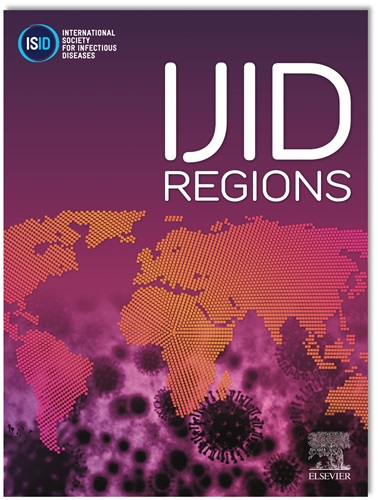Toward the elimination of HAT in Nigeria: leaving no community behind
IF 4.8
2区 医学
Q1 INFECTIOUS DISEASES
引用次数: 0
Abstract
Objectives
Sleeping sickness, also known as human African trypanosomiasis (HAT), is a tsetse fly-borne neglected tropical disease that affects underserved rural communities in sub-Saharan Africa. Despite the advancements in diagnostics, the actual status of sleeping sickness in Nigeria remains unclear. In our quest for clarity, we conducted a human population survey to ascertain the prevalence of HAT in tsetse fly-infested remote rural hamlets.
Methods
Blood samples were collected from 72 consenting participants by finger pricking. Blood samples were blotted on a Flinders Technology Associate Classic Card and screened for T. b. gambiense infection using colorimetric loop-mediated amplification with Trypanosoma brucei gambiense surface glycoprotein-specific (TgsGP) primers.
Results
Of the 72 consenting individuals, 40.28% (55.17% men, 44.83% women) were infected with T. b. gambiense (P = 0.738). Age group 51-60 years had the highest prevalence of 77.78% (P = 0.214). The infection rate was higher among uneducated individuals, with a prevalence of 34.48% (P = 0.007). Alaho had the highest prevalence (66.67%), followed by Arabata (38.10%) and Oloya (31.43%) (P = 0.035).
Conclusions
Silent transmission of HAT is ongoing at the study sites, warranting intensified community sensitization and surveillance scale-up. An urgent, health-guided, strategic control approach is imperative to prevent epidemics in hamlets and a devastating resurgence in Nigeria.
求助全文
约1分钟内获得全文
求助全文
来源期刊
CiteScore
18.90
自引率
2.40%
发文量
1020
审稿时长
30 days
期刊介绍:
International Journal of Infectious Diseases (IJID)
Publisher: International Society for Infectious Diseases
Publication Frequency: Monthly
Type: Peer-reviewed, Open Access
Scope:
Publishes original clinical and laboratory-based research.
Reports clinical trials, reviews, and some case reports.
Focuses on epidemiology, clinical diagnosis, treatment, and control of infectious diseases.
Emphasizes diseases common in under-resourced countries.

 求助内容:
求助内容: 应助结果提醒方式:
应助结果提醒方式:


